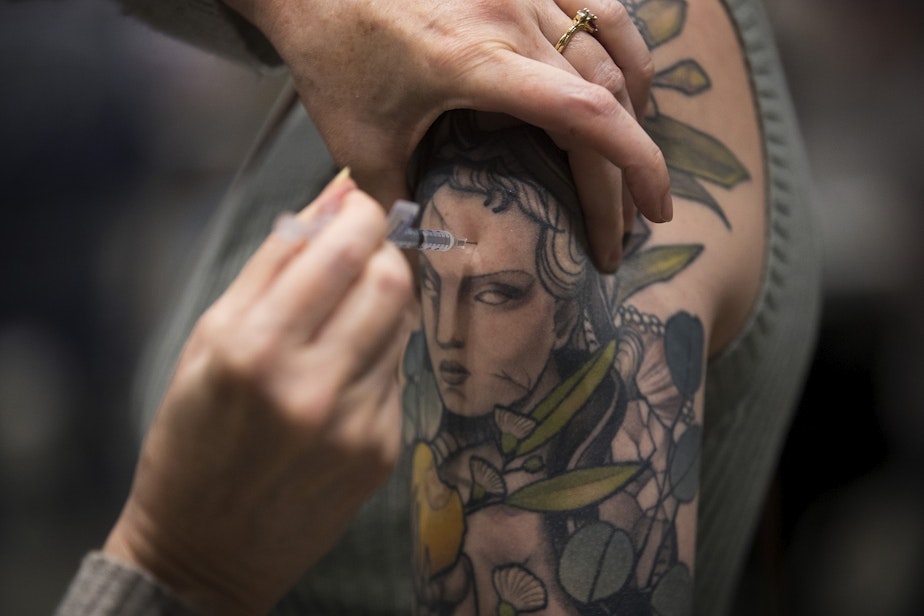3 years in, Covid still present, but King County has more tools to fight it

Three years into the Covid-19 pandemic, the landscape has changed in King County.
Back in 2020, this was the first epicenter of cases and outbreaks in nursing homes in the U.S. There were no vaccines, and health officials had not yet worked out the best precautions.
Now, health officials say Covid-19 hospitalizations and deaths are trending down, immunity levels in the community have risen thanks to vaccines and past infections, and tests, treatment, and masks are far more readily available than they once were.
The county is in a different place as the final emergency measures at the state and federal level are set to expire.
In April, Washington’s mask mandate in health care and correctional facilities will end, but health officials say masking will still be recommended.
And in May, the federal Covid-19 emergency declaration will lapse.
For King County residents, the most direct impacts from this expiration will likely be the wind down of free public vaccines, testing, and treatment.
Sponsored
That’s according to Dr. Eric Chow, chief of Public Health – Seattle & King County's Communicable Disease and Epidemiology Program.
During a media briefing Wednesday, Chow said Covid-19 vaccines will continue to be free for children.
But when the federal government’s stockpile of free shots, tests and antivirals runs out, coverage for adults will switch to the commercial market and be up to insurance providers.
Aside from these changes, Chow said he worries about indirect impacts as the emergency ends.
“Individuals and businesses might take this to mean that it is okay to let go of all those important lessons that we've learned during the pandemic that keep us safe from Covid-19,” Chow said. “The pandemic is not over.”
Sponsored
The risk for severe disease and death is lower now for most people in the county, but not for everyone. And the risk of what’s commonly called "long covid" remains, even for those with mild infections, according to Chow.
Chow said it’s important that precautions practiced over the past few years are carried forward to keep Covid-19 at bay and allow the community to live with the virus.
He stressed that staying up to date with vaccines, testing and isolating when ill or exposed, wearing a mask in risky indoor settings, and paying attention to ventilation all remain important steps that people should take.
“We have to be very thoughtful about the decisions, and the context of our surroundings, the people around us, and the current burden of Covid-19 in the community,” Chow said.
Just as prior generations learned that hand hygiene or seatbelts could help reduce the risk of disease or injury, Chow said he and his family will continue utilizing masks and other precautions in their daily lives to lower the risk for Covid infection.
Sponsored
He encouraged others to do the same.
Entering the fourth year of the pandemic, nearly 85% of King County’s population has completed the primary Covid-19 vaccine series, and 65% have received one booster.
But the number of people who are fully up to date with the latest omicron shot is much smaller, at just under 32% of county residents.
Disparities in who is most protected also remain. Residents in south King County, and Black, Indigenous, and other people of color remain less vaccinated than their white neighbors.




